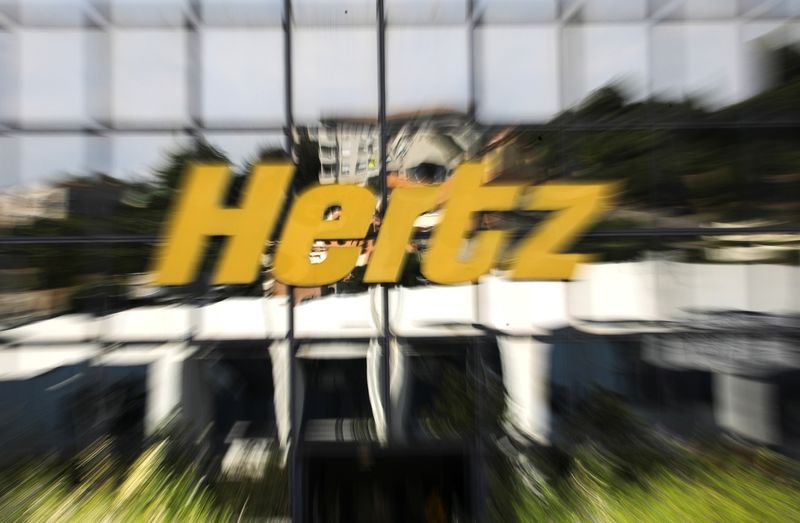Two National Guard members shot near White House
Introduction & Market Context
Hertz Global Holdings Inc (NYSE:HTZ) delivered a strong financial turnaround in its third quarter of 2025, according to the company's earnings presentation released on November 4. The car rental giant reported its first positive earnings per share in two years, with the stock surging over 40% in response to the better-than-expected results.
The company's presentation highlighted significant improvements in profitability metrics despite modest revenue challenges, as Hertz continues to implement its "Back-to-Basics" strategy focused on fleet optimization, revenue management, and cost control.
Quarterly Performance Highlights
Hertz reported Q3 2025 revenue of $2.5 billion, down 4% year-over-year but up 13% sequentially from Q2. The company achieved a dramatic improvement in profitability, posting Adjusted Corporate EBITDA of $190 million compared to a loss of $157 million in the same quarter last year.
As shown in the following chart of year-over-year performance:

The company's vehicle utilization rate improved to 84%, up 260 basis points from the prior year, while depreciation per unit (DPU) decreased dramatically by 49% to $273, compared to $532 in Q3 2024. These operational improvements helped drive the significant profitability turnaround despite the slight revenue decline.
Sequential improvements were equally impressive, with revenue growing 13% from Q2 to Q3, while Revenue Per Unit (RPU) increased 9% to $1,530:

"We're building a diverse platform of value-enhancing capabilities that could make Hertz considerably more valuable than today," stated Scott Harrelson, CFO, according to the earnings call transcript.
Strategic Initiatives
Hertz's presentation emphasized its "Back-to-Basics" strategy, which focuses on three key building blocks: fleet optimization, unit revenue improvement, and cost management. The company has established clear targets for each area:

The strategy appears to be yielding results, particularly in fleet management where depreciation costs have been significantly reduced. While the company's current DPU of $273 is approaching its target of "under $300," there remains room for improvement in revenue per unit and direct operating expenses to reach the stated goals.
Hertz continues to position itself as a global leader in car rental with approximately 11,200 locations across 160 countries, serving about 25 million annual rentals with a fleet of around 560,000 vehicles:

The company maintains a diverse brand portfolio beyond its flagship Hertz brand, including Dollar, Thrifty, and several international brands:

Detailed Financial Analysis
Hertz's financial position shows a solid liquidity profile despite carrying substantial debt. As of September 30, 2025, the company reported $2.2 billion in total liquidity, evenly split between unrestricted cash and available credit facility capacity. The non-vehicle debt maturity profile shows significant obligations coming due in 2028 and 2029:

The company's adjusted free cash flow showed remarkable improvement, reaching $248 million in Q3 2025 compared to negative $154 million in the prior-year period. This positive cash generation provides Hertz with additional financial flexibility to manage its debt obligations and invest in strategic initiatives.
Transaction days remained relatively stable at 40.9 million (down 1% year-over-year) despite a 7% reduction in average fleet size to 545,000 vehicles. This efficiency improvement reflects the company's focus on maximizing utilization and revenue per vehicle rather than simply expanding fleet size.
Forward-Looking Statements
According to the earnings call transcript, Hertz is targeting a 3-6% EBITDA margin in 2026, with aspirations of achieving $1 billion in EBITDA by 2027. The company anticipates growth across its airport, off-airport, and mobility segments.
Key to achieving these targets will be continued progress on the "Back-to-Basics" initiatives, particularly reducing depreciation per unit below $300 while increasing revenue per unit above $1,500. Management also aims to maintain direct operating expenses in the low $30s per transaction day.
CEO Gil West emphasized the company's strategic shift, stating, "The best way for Hertz to be part of the future is to be in the service of it," highlighting the company's evolution toward becoming a comprehensive mobility platform rather than just a traditional car rental provider.
While the company's presentation and earnings results demonstrate significant progress, challenges remain, including supply chain disruptions that could impact fleet availability, market saturation in the car rental industry, and increasing competition from rideshare and peer-to-peer rental services.
The market's strongly positive reaction to the Q3 results suggests investors are gaining confidence in Hertz's turnaround strategy, with the stock rising 40.28% on the day of the announcement to $6.93, after trading as high as $5.70 in pre-market activity.
Full presentation:
This article was generated with the support of AI and reviewed by an editor. For more information see our T&C.
